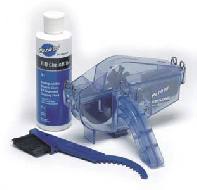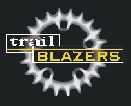Tech Tip: Helmet Replacement
The design of modern micro-shell bicycle helmets is such that when impacted, the styrofoam-like middle liner gets crushed, but the outer shell tends to bounce back. It is the crushing of the middle liner that absorbs the impact energy, and thus protects your head.
Unfortunately, the crushed liner is now unable to protect against further impacts. Because the outer liner tends to bounce back into shape, the impacted middle liner is now not visible as damaged, and the helmet can look good as new.
It is for this reason that any impacted helmet must be replaced immediately, even if it looks undamaged. Check with your local independent bike dealer or the manufacturer of the helmet, as many manufacturers sell crash replacements at a discount off of regular retail price (the crashed helmet must be sent back to the manufacturer for inspection).
 Tech Tip: Drivetrain Maintenance
Tech Tip: Drivetrain Maintenance
Until the bicycle industry comes out of the dark ages and develops a low or no maintenance long life drivetrain, we are stuck with an archaic shifting/gearing system that requires periodic maintenance and replacement.
To keep your bicycle's drivetrain working well and lasting long, keep it clean and well lubed. A chain cleaner unit like the ones available from Park (photo at right) and others will help out in this task. A good biodegradeable citrus based degreaser works best for this type of job. In lieu of a chain cleaner unit, a toothbrush and the aforementioned degreaser can work just as well.
Once the chain is cleaned with the degreaser, wipe clean and let the degreaser evaporate for a few minutes, then apply a good chain lube. Currently, I use Shimano's Slippery Spitt, but there are many good products out there from Finish Line, Pedros, Phils, etc. Just remember to use a bicycle specific lube, as your common household lube or automotive lube will tend to attract dust and dirt.
Lube your chain after every wet ride, and clean and lube after muddy rides.
As a drivetrain wears out, the three main components of the drivetrain wear out toghther (chain, rear cogs, chainrings). It is for this reason that when a drivetrain wears out, all three components should be replaced for best results. Putting a brand new chain on old cogs and chainrings will result in worse shifting than with the old chain.



